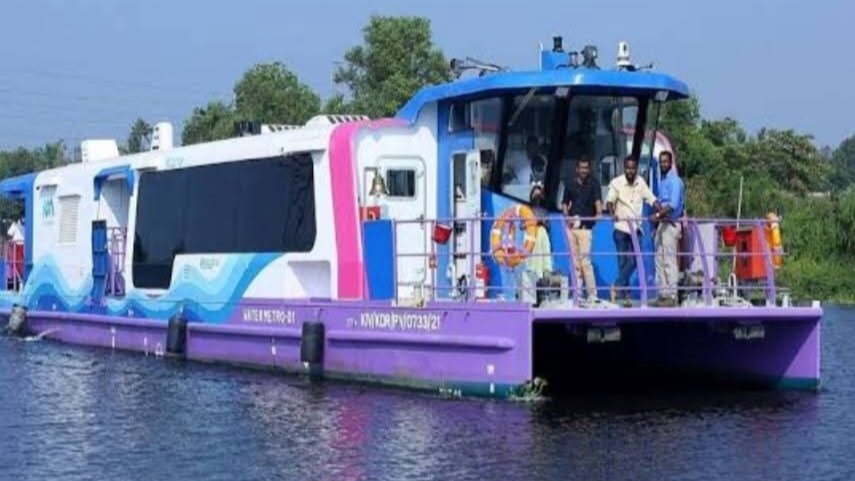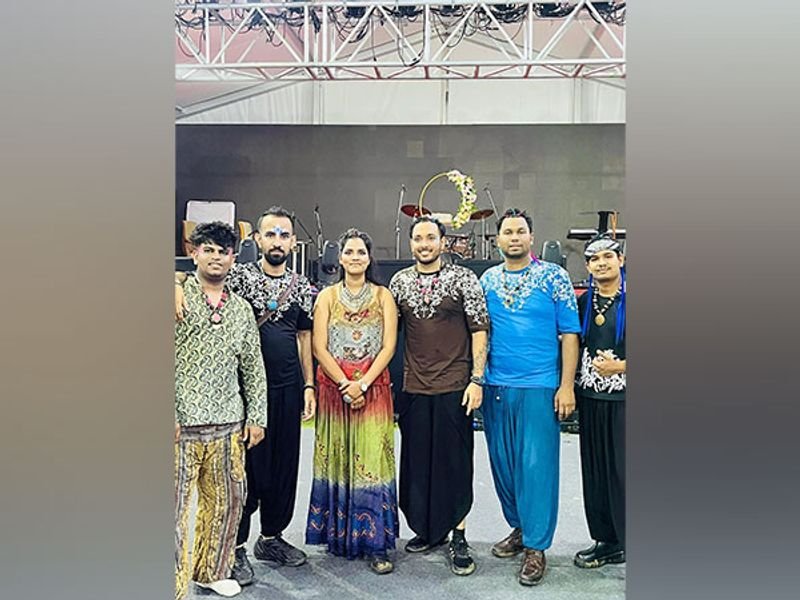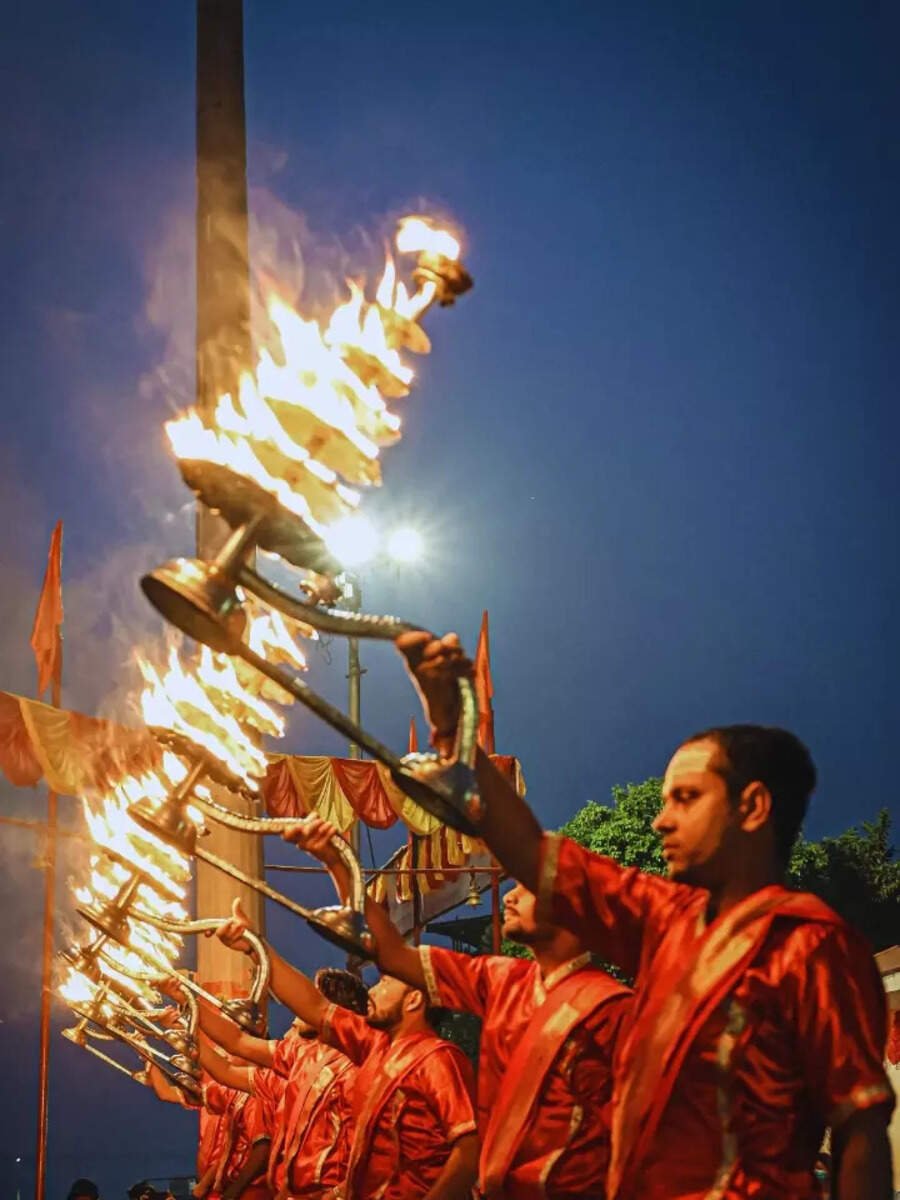Spiritual Travel
A spiritual journey across borders

Located just 45 km from Amritsar on the west bank of the Ravi River, the village of Kartarpur holds profound significance for the Sikh community. It is the site where Guru Nanak Dev, the founder of Sikhism and the first of the 10 Sikh Gurus, spent the last 18 years of his life.
Kartarpur is home to two important gurudwaras, Gurdwara Dera Baba Nanak and Gurdwara Sri Kartarpur Sahib, which attract about 500 pilgrims and tourists from India, daily. What makes this destination truly unique is its location in Pakistan, offering visitors a rare opportunity for Indians to go across the border for a deeply spiritual experience.
A visit to Kartarpur not only allows pilgrims to connect with their faith but also offers a chance to experience the culture and landscape of neighbouring Pakistan. This journey seamlessly blends spirituality with a sense of discovery, leaving visitors with lasting memories of both reverence and exploration.
The journey
The journey to Kartarpur begins long before the day of travel, as it starts a month in advance. To secure a spot, visitors must register well ahead of time, as the few slots available everyday fill up quickly.
“So for Kartarpur, we had filed an application online on the website almost a month prior to our trip to Amritsar. In that application, they ask you to mention if you have ever been to Pakistan before or not which really intrigued me honestly and rest of it is the regular stuff only like you Aadhar card details and current address. After we filled the application, you have to regularly check its status,” Muskan Bhagra a Delhi based social media manager, who recently made the trip, tells India & You.
There are several ways to reach the Kartarpur Corridor, but the most convenient approach is to first arrive in Amritsar, explore the city, and then dedicate a day to visiting Kartarpur. The distance between Amritsar and the Kartarpur border is approximately 53 km, and can be easily covered by either a public bus or taxi.
Kartarpur Corridor is a joint initiative by the governments of India and Pakistan
The Kartarpur Corridor, a joint initiative by the governments of India and Pakistan, was inaugurated in 2019. The initiative aimed at providing visa-free access to Sikh pilgrims wishing to visit the sacred Gurdwara.
Since its opening, the corridor has become a symbol of peace and unity, providing an opportunity for people from both nations to connect with their shared spiritual heritage. With facilities like comfortable buses, proper immigration procedures, and modern amenities at the border crossing, the corridor ensures a smooth and safe experience for visitors.
“We then reached Kartarpur Corridor. I was surprised to see how beautiful and well maintained it actually was. It was built like a mini airport by the Sikhs. We checked-in and got through the security process. At the immigration control, they ask you a few general questions about yourself and your purpose of visit before letting you move ahead,” says Bhagra.
“We were also informed about the rules and regulations like we cannot bring any Pakistani currency into our country, we also cannot bring their soil, which I think may be more due to ‘patriotism’ than anything else, also no fruits with seeds are allowed back with from Pakistan,” she adds.
The corridor’s opening has not only boosted spiritual tourism but also strengthened cross-border ties, enabling pilgrims to visit a sacred site that had previously been inaccessible due to geopolitical tensions. As the corridor continues to attract pilgrims and tourists alike, it has also become a place of cultural exchange, offering visitors the chance to experience the rich history and traditions of the region.
The Gurudwara
Gurdwara Darbar Sahib Kartarpur, surrounded by serene landscapes, is a peaceful retreat for reflection and prayer, making it a significant destination for those seeking spiritual solace as well as those interested in the historical and cultural context of Sikhism.
The peaceful vibes, with lush greenery, flowing waters of the Ravi River, and wide open spaces, evokes a sense of spirituality and tranquility. The stunning white marble structure of the Gurudwara, with its domes and minarets, shines brightly under the sun, while the reflection of the building in the river water adds to its magical charm.
Visitors and pilgrims can not only soak in the spiritual ambience of the holy site but also indulge in delectable langar, free meals served to all visitors, offered at the premises.
People also bring homemade food and serve it as langar at the Gurudwara
“Over there, we had langar, a community meal served in gurdwaras and besides the food cooked there, a lot of people also bring homemade food and serve it as langar there. It was delicious. We had fried beignets, macaroni, papad, kadhi, which is an Indian curry made of curd and spices, red kidney beans and much more,” says Bhagra.
The visit to Kartarpur is not only a deeply spiritual experience but also offers tourists an opportunity to interact with the locals of Kartarpur, Pakistan, and gain a deeper understanding of the traditions and culture of the neighboring region.
“There is a small market near the Gurudwara which has 10-15 shops for shopping purposes and grabbing a coffee. We came across some brands of Pakistan like Maria B and Nishat amongst others,” says Bhagra
“The market is actually where we could interact with Pakistani people and they were extremely warm and friendly. These people came from a nearby village called Kartarpur Ghoda and they set up shops here for business. There were dry fruit shops, clothing brands, and local coffee shops in this market,” she adds.
Spiritual Travel
Bilaspur Set to Transform into Himachal’s Ultimate Adventure and Spiritual Hub

Move over, Manali and Shimla! Bilaspur is gearing up to become the state’s next big tourism hotspot, blending adrenaline-pumping adventures with serene spiritual experiences. The district administration has rolled out ambitious plans to develop water, land, and aerial tourism, promising something for thrill-seekers, pilgrims, and nature lovers alike.
A Sky-High Attraction: The Glass Bridge
Imagine walking on a transparent bridge, suspended high above breathtaking landscapes—Bilaspur’s upcoming Glass Bridge at Bharari will do just that! Designed to rival global attractions, this engineering marvel will offer daredevils an unforgettable experience while giving tourists a reason to extend their stay. Officials confirm the blueprint is ready, and construction will kick off soon after final approvals.
Sailing Through Scenic Routes: The Water Metro
Pilgrims visiting Maa Naina Devi will soon have a faster, more scenic journey thanks to the proposed Water Metro, connecting Bhakra Ghat to Kosariya Ghat. This isn’t just about convenience—it’s about turning travel into an experience. Devotees and tourists can hop on boats, enjoy the tranquil waters, and even transport their vehicles via waterways.
Jet Skis, Kayaking & More: Water Sports at Nakrana
Bhakra Dam’s pristine waters are about to get a lot more exciting! The district is eyeing water sports like jet skiing, kayaking, and boating to attract adventure junkies. The best part? Pilgrims heading to Naina Devi can now add a splash of adventure to their spiritual trip.
Bharari – The New Stopover Destination
Strategically located near Shimla, Manali, and Dharamshala, Bharari will soon feature modern tourist hubs with food plazas, parking, rest areas, and info centers. No more cramped pit stops—just smooth, comfortable breaks for travelers.
Listening to Locals: Boaters Get a Voice
Deputy Commissioner Rahul Kumar made sure local boat operators were heard during inspections, promising quick fixes to their concerns. This people-first approach ensures tourism growth benefits everyone.
Bilaspur’s transformation isn’t just about flashy infrastructure—it’s about jobs for youth, better travel experiences, and putting this hidden gem on India’s tourism radar. With projects set to launch soon, the district is poised to become a must-visit for those seeking adventure, spirituality, and untouched natural beauty.
Spiritual Travel
Shiva Tribe Debuts in Gurgaon’s Tikli-Raiseena: IMPC’s Bold Step to Merge Spirituality, Rural Tourism, and Modern Family Wellness

VMPL
New Delhi [India], August 4: In the lush rural landscape of Tikli-Raiseena near Gurgaon, a new chapter in India’s spiritual and rural tourism ecosystem quietly unfolded. The International Mandir Prabandhak Committee (IMPC) launched its ambitious spiritual wellness initiative–Shiva Tribe–an experience-driven, immersive space designed to reconnect Gen Z and modern families with India’s timeless spiritual roots.
Set against the tranquil backdrop of Haryana’s Aravalli fringes, Shiva Tribe is more than a mandir–it is a curated journey of self-discovery, holistic wellness, and cultural revival, seamlessly merging ancient wisdom with modern aspirations. The inaugural three-day Pran Pratishtha Mahotsav was held in July, graced by spiritual luminaries including Pujya Shri Sudhanshu Ji Maharaj, Pujya Shri Dayanand Ji Maharaj, and dignitaries such as Haryana’s former Minister Shri Om Prakash Dhankar. Business leaders, rural development advocates, and spiritual patrons attended in significant numbers–signaling a rising interest in faith-based tourism models.
Spiritual Tourism: India’s Growing Wellness Sector
India’s spiritual tourism market is undergoing a silent revolution. According to the Ministry of Tourism, the wellness and spiritual tourism segment is projected to reach USD 30 billion by 2028, growing at a CAGR of over 10%. With over 330 million domestic religious tourists recorded annually and rising international interest in authentic Indian experiences, initiatives like Shiva Tribe have the potential to create high-value, low-impact tourism models in rural belts–generating employment, fostering entrepreneurship, and revitalizing local economies.
“In today’s fragmented lifestyle, families are searching for meaningful escapes–not just vacations. Shiva Tribe is that sacred pause–a place to reconnect, reflect, and realign, together,” said Dr. Preet Sandhuu, mentor of the project and a key voice in India’s contemporary spiritual movement.
A New Blueprint: Spirituality Meets Community Living
Unlike traditional spiritual centers, Shiva Tribe offers a complete spiritual-eco retreat–including weekend live devotional music by its in-house ‘Shiva Tribe Band’, yoga sessions, mantra-infused meditations, Vedic rituals, and stay facilities for families. It’s a full-circle experience designed to inspire urban youth and families alike to step into a more conscious, value-driven lifestyle.
“Here, spirituality is not a sermon–it’s an experience,” said Shri MP Singh, project visionary and founder of ShivaTribe. “We want to build a network of such community-driven centers across rural India, using temple heritage as a catalyst for rural rejuvenation and youth engagement.”
Rural Regeneration Through Faith
The Tikli model aligns with India’s rural tourism policy goals by transforming underexplored rural regions into mindful tourism destinations. With over 60% of India’s population residing in villages, initiatives like this leverage India’s spiritual capital to promote rural entrepreneurship, handicrafts, organic farming, and ecotourism–creating a sustainable rural economy rooted in culture and community.
IMPC’s Broader Mission
The International Mandir Prabandhak Committee (IMPC), known for initiatives like the Mahasangam Yatra, Trisul Yatra and Shiv-Shakti Kendras, is rapidly becoming a bridge between India’s ancient temple traditions and its digital future. Its work focuses on temple modernization, spiritual leadership development, and community revival–backed by collaborations with scholars, saints, and civic leaders.
By anchoring the Shiva Tribe initiative in Tikli, IMPC demonstrates how faith-based community models can attract tourism, foster economic inclusion, and support national goals like ‘Viksit Bharat’ and ‘Digital Bharat’.
Shared by
(ADVERTORIAL DISCLAIMER: The above press release has been provided by VMPL. ANI will not be responsible in any way for the content of the same)
(This content is sourced from a syndicated feed and is published as received. The Tribune assumes no responsibility or liability for its accuracy, completeness, or content.)
Spiritual Travel
10 oldest temple towns in India for spiritual getaways – The Times of India

10 oldest temple towns in India for spiritual getaways The Times of India
Source link
-

 Brand Stories2 weeks ago
Brand Stories2 weeks agoBloom Hotels: A Modern Vision of Hospitality Redefining Travel
-

 Brand Stories1 week ago
Brand Stories1 week agoCheQin.ai sets a new standard for hotel booking with its AI capabilities: empowering travellers to bargain, choose the best, and book with clarity.
-

 Destinations & Things To Do2 weeks ago
Destinations & Things To Do2 weeks agoUntouched Destinations: Stunning Hidden Gems You Must Visit
-

 Destinations & Things To Do1 week ago
Destinations & Things To Do1 week agoThis Hidden Beach in India Glows at Night-But Only in One Secret Season
-

 AI in Travel2 weeks ago
AI in Travel2 weeks agoAI Travel Revolution: Must-Have Guide to the Best Experience
-

 Brand Stories1 month ago
Brand Stories1 month agoVoice AI Startup ElevenLabs Plans to Add Hubs Around the World
-

 Brand Stories3 weeks ago
Brand Stories3 weeks agoHow Elon Musk’s rogue Grok chatbot became a cautionary AI tale
-

 Asia Travel Pulse1 month ago
Asia Travel Pulse1 month agoLooking For Adventure In Asia? Here Are 7 Epic Destinations You Need To Experience At Least Once – Zee News
-

 AI in Travel1 month ago
AI in Travel1 month ago‘Will AI take my job?’ A trip to a Beijing fortune-telling bar to see what lies ahead | China
-

 Brand Stories2 weeks ago
Brand Stories2 weeks agoContactless Hospitality: Why Remote Management Technology Is Key to Seamless Guest Experiences
